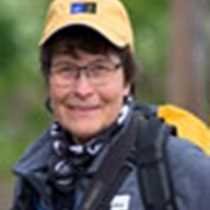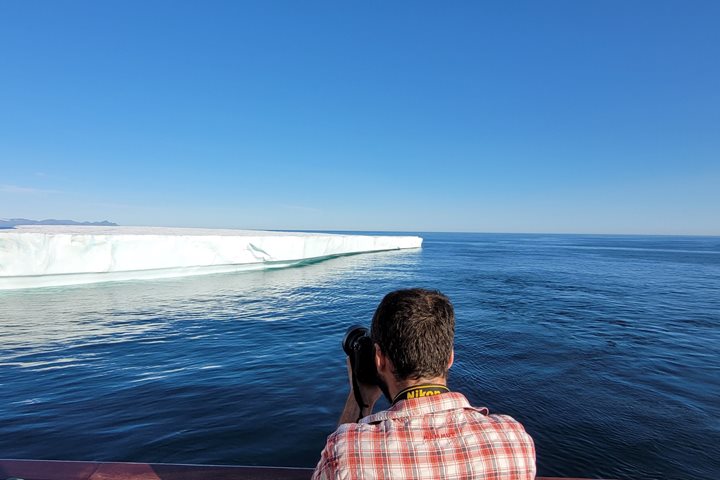We sailed overnight across the North Atlantic from the remote Faroe Islands to East Iceland. At breakfast-time the National Geographic Orion docked at Djúpivogur, “Deep Harbor”, in East Iceland. Here the bold, ice-carved mountains rise steeply from the sea and everything we see has been shaped by glaciers during the Ice Age. Stacks of layered basaltic lava flows, all shaped by ice, dominate the dramatic landscape along the coast.
On this first day in Iceland we have two expeditions planned. The first group of adventurers depart early on motor coaches, bound for Vatnajökull, the largest ice cap outside the Polar Regions, and to Jökulsarlon, a proglacial lake at the toe of Breidamerkurjökull, a large exit glacier that drains off the giant ice cap. A scenic drive along the dramatic southeast coast brings us to our destinations. One group heads up the winding, and sometimes heart-stopping mountain road to the base-camp. From here our transportation onto the great glacier is by “snow-scooter”, think Ski-doo, and four-wheel drive vehicles especially adapted for driving on the snow. At the top we stop for time to admire the vastness of the snow and ice around us and to throw some snowballs. Another group drives on to Jökulsarlon to see the amazingly blue icebergs in the glacial lake and take a ride around the lake in an amphibious vehicle. Here the guide grabs a piece of astonishingly clear ice for us to hold and taste. For lunch we all meet at Smyrlabjorg Hotel for an excellent buffet. We change locations for the afternoon.
Papey, “Friar’s Island”, was the destination for a second group of us who took a small boat, the Papeyjarferdir, driven by Captain Seivar from the Djupivogur Harbor to a the low island of Papey. On the way we stopped to see common and grey seals sunning on the rocks and nesting colonies of common guillemots and kittiwakes on the basalt cliffs. Papey (-ey means island) was thought to have been inhabited by Irish monks or papists, hence the name. Now it is grass-covered and inhabited a few summer visitors and by 25 ewes, forty-some lambs, and many nesting birds. Here are seabirds such as Atlantic puffins, razor bills, common guillemots, northern fulmars, and Atlantic puffins. Common eiders swim in the bay with their ducklings close-by. Nesting in the meadows are the waders, e.g., whimbrels, redshanks, and the red-necked phalarope. Passerines, e.g., the meadow pipit, and snow bunting, and white wagtail were singing and foraging in the grasses. This group was led by an excellent and soft-spoken local naturalist, Gunnar, and our staff naturalist, Grace. We saw many beautiful small plants among the grasses including frog orchids, wild thyme, and scurvy grass, said to be a source of vitamin C, but we tried it and found it was not very tasty. A highlight was a visit to the smallest church in Iceland, built by the farmer who brought his own very large family to worship there.
After a full day of adventures we enjoy dinner and set sail for tomorrow’s destination of Grímsey, Grím’s Island.







